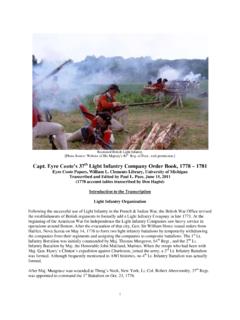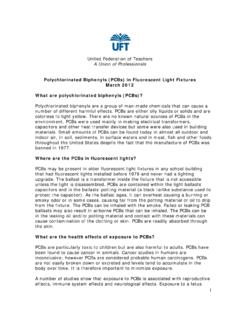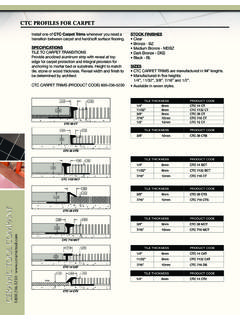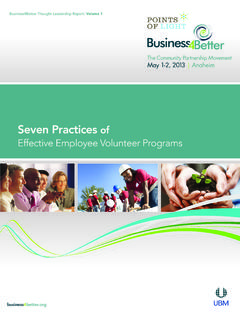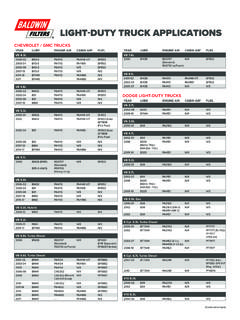Transcription of Material Safety Data Sheet Mineral Oil, Light and Heavy
1 Material Safety Data Sheet Mineral Oil, Light and Heavy MSDS# 17996 Section 1 - Chemical Product and company Identification MSDS Name: Mineral Oil, Light and Heavy Catalog Numbers:BP2629-1, NC9854214, O121-1, O121-20, O121-4, O122-1, O122-4, O122-4LC, O2-20, O5-20 Synonyms:White Mineral oil (petroleum); saturated hydrocarbons. company Identification: Fisher ScientificOne Reagent LaneFair Lawn, NJ 07410 For information in the US, call: 201-796-7100 Emergency Number US:201-796-7100 CHEMTREC Phone Number, US: 800-424-9300 Section 2 - Composition, Information on Ingredients ---------------------------------------- CAS#:8042-47-5 Chemical Name:White Mineral oil %:>99 EINECS#:232-455-8 ---------------------------------------- Hazard Symbols:None listed Risk Phrases:None listed Section 3 - Hazards Identification EMERGENCY OVERVIEW Caution!
2 Inhalation of a mist of this Material may cause irritation of the lungs. May cause eye and skin irritation. Target Organs: Lungs. Potential Health EffectsEye:May cause eye irritation. Skin:May cause skin irritation. Prolonged and/or repeated contact may cause defatting of the skin and dermatitis. Ingestion:May cause gastrointestinal irritation with nausea, vomiting and diarrhea. Inhalation:Causes respiratory tract irritation. Chronic:Chronic exposure may cause lung damage. Section 4 - First Aid Measures Eyes:Immediately flush eyes with plenty of water for at least 15 minutes, occasionally lifting the upper and lower eyelids. Get medical aid. Skin:Flush skin with plenty of water for at least 15 minutes while removing contaminated clothing and shoes.
3 Get medical aid if irritation develops or persists. Ingestion:Never give anything by mouth to an unconscious person. Get medical aid. Do NOT induce vomiting. If conscious and alert, rinse mouth and drink 2-4 cupfuls of milk or water. Inhalation:Remove from exposure and move to fresh air immediately. Get medical aid if cough or other symptoms appear. Support breathing as needed. Notes to Physician:Section 5 - Fire Fighting Measures General Information:As in any fire, wear a self-contained breathing apparatus in pressure-demand, MSHA/NIOSH (approved or equivalent), and full protective gear. During a fire, irritating and highly toxic gases may be generated by thermal decomposition or combustion.
4
5
6
7
8 Generated by thermal decomposition or combustion.
9 Extinguishing Media:For small fires, use water spray, dry chemical, carbon dioxide or chemical foam. Autoignition Temperature:Not available. Flash Point:> 160 deg C (> deg F) Explosion Limits: Lower:Not availableExplosion Limits: Upper:Not availableNFPA Rating:health: 1; flammability: 1; instability: 0; Section 6 - Accidental Release Measures General Information:Use proper personal protective equipment as indicated in Section 8. Spills/Leaks:Absorb spill with inert Material ( vermiculite, sand or earth), then place in suitable container. Avoid runoff into storm sewers and ditches which lead to waterways. Clean up spills immediately, observing precautions in the Protective Equipment section. Remove all sources of ignition.
10 Provide ventilation. Section 7 - Handling and Storage Handling:Use with adequate ventilation. Avoid contact with eyes, skin, and clothing. Keep contai
